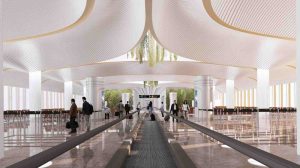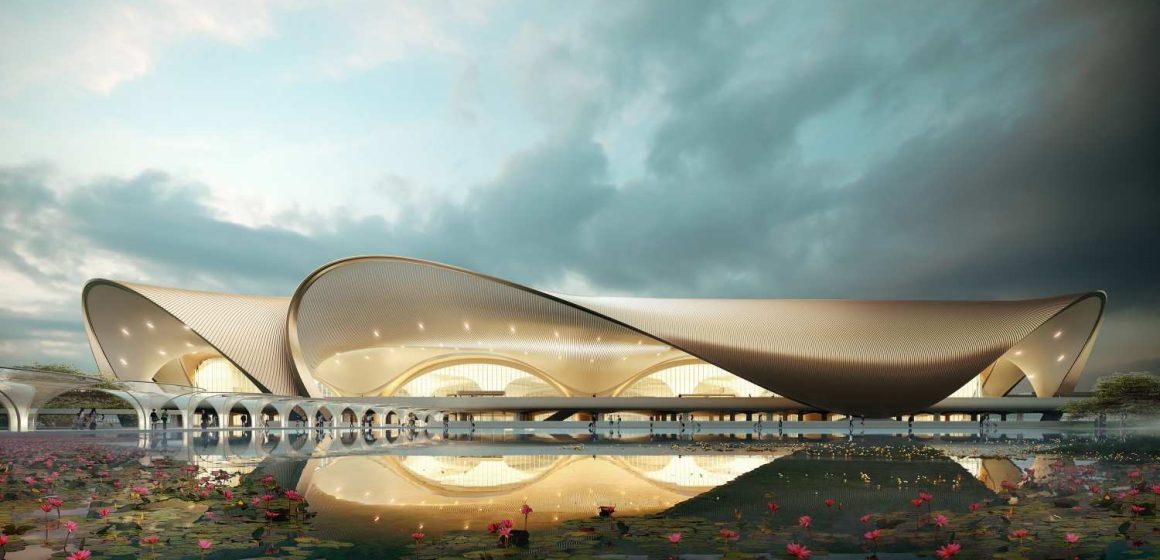More than a relief valve for Mumbai’s saturated skies, India’s newest mega-airport is poised to become a strategic growth engine that enhances connectivity, attracts investment, and accelerates urban development across Maharashtra and Western India, writes Manish Pant.
Just as its inspiration—a blooming lotus—symbolises the opening of the human mind, the formal inauguration of Navi Mumbai International Airport on October 30 is expected to unlock multiple developmental vistas. And these benefits promise to span the Mumbai Metropolitan Region, one of India’s most densely populated urban clusters, and beyond.
Following the commencement of commercial flights, the world’s fastest-growing major economy will add yet another transformative infrastructure asset to its portfolio. NMIA is designed not merely to ease pressure on Chhatrapati Shivaji Maharaj International Airport (CSMIA) but to reposition Navi Mumbai as a hub for commerce, logistics, and global connectivity.
For decades, CSMIA has operated near capacity, constrained by limited land and rising demand. Once India’s busiest international airport, it ceded the top spot to Delhi’s Indira Gandhi International Airport (IGIA), largely due to infrastructure limitations. NMIA, with its expansive design and strategic location, is expected to rebalance that equation.
According to the government-backed branding and communication agency, India Brand Equity Foundation (IBEF), “India has envisaged increasing the number of operational airports to 220 by 2025, with Navi Mumbai International Airport playing a pivotal role in easing metro congestion and expanding regional connectivity.”
The airport’s launch also coincides with the upcoming Noida International Airport near Delhi, intensifying competition between the Mumbai Metropolitan Region and the National Capital Region. This rivalry is expected to benefit airlines, passengers, and the broader economy.
Leading Indian carriers, such as IndiGo, Air India, and Akasa, have already finalised ambitious operational plans for the country’s newest mega airport, positioning NMIA as a key node in their domestic and international growth strategies. IndiGo, India’s largest airline by fleet and market share, will be the first airline to operate from the airport. Starting with 18 daily departures in the first month of launching from NMIA, it intends to progressively increase to a whopping 140 daily departures by November next year.
Air India, the country’s second-largest airline, will have a strong presence in passenger and cargo services. It is perhaps with an eye on the future that Campbell Wilson, CEO & Managing Director, Air India, recently observed, “We look forward to commencing operations at NMIA, as Mumbai joins the league of world cities with more than one airport. At the Air India group, we are proud to lead the charge in connecting the West to the East and beyond via India, and our expansion at NMIA will support India’s growth as a global aviation hub.”
Economic Growth Driver
Built at an estimated cost of ₹160 billion ($1.93 billion) by Adani Airports, NMIA’s first phase is part of the country’s expanding portfolio of high-impact infrastructure projects. Once fully operational by 2032, the airport is expected to handle up to 90 million passengers annually. In comparison, CSMIA handled 54.8 million passengers in 2024.
This surge in connectivity is expected to generate thousands of jobs across the aviation, logistics, hospitality, and retail sectors. According to the global airline industry trade body, International Air Transport Association (IATA), a 1 per cent increase in air connectivity can boost GDP by 0.5 per cent. With NMIA integrating Navi Mumbai into global flight paths, Maharashtra’s economic output could see a meaningful uplift over the next decade.
As noted in an IATA infrastructure brief, “Next-generation airports like NMIA are designed around automation, sustainability, and universal access—setting new benchmarks for passenger experience and operational efficiency.”
The airport is also expected to anchor investment flows into the Navi Mumbai Airport Influence Notified Area (NAINA), a planned smart city earmarked for commercial, residential, and industrial development. Analysts anticipate billions in foreign direct investment and private capital, positioning Navi Mumbai as a counterweight to established business districts such as Bandra Kurla Complex and Lower Parel in Mumbai.

Boost to Tourism, Trade and Infrastructure
Per professional services firm Deloitte’s India Infrastructure Outlook 2024, “NMIA is poised to become a gateway for international tourism and trade, enhancing cargo throughput and enabling faster access to key economic corridors across western India.”
NMIA will enhance access to Maharashtra’s tourism destinations, from the Konkan coast and Ajanta-Ellora caves to the Western Ghats. Improved international connectivity is expected to draw more global travellers to the state’s cultural and natural heritage sites.
On the trade front, NMIA’s cargo infrastructure will strengthen Maharashtra’s role as a manufacturing and export hub. Sectors such as pharmaceuticals, textiles, agriculture, and engineering stand to benefit from faster and more reliable access to global markets.
NMIA is being embedded into a broader multimodal transport ecosystem. The fully operationalised 21.8 km Atal Setu, India’s longest sea bridge, connects South Mumbai to Navi Mumbai in under 30 minutes, with the airport as a key hub. Besides, the upcoming Navi Mumbai Metro and enhanced suburban rail links will ensure seamless last-mile connectivity for commuters and airport staff.
Dedicated freight corridors are also being developed to link NMIA’s cargo terminals with Maharashtra’s industrial clusters in Pune, Nagpur, and Aurangabad, reducing transit times and improving supply chain efficiency.
Beyond its immediate catchment area, NMIA will also benefit regions across Gujarat, Goa, Karnataka, Madhya Pradesh, and the union territory of Daman and Diu through enhanced connectivity and cargo access. Industrial belts in South Gujarat and northern Karnataka stand to gain from faster multimodal integration, while tourism and agro-export corridors in Goa and Daman may see increased throughput.
Urban and Real Estate Impact
The airport’s influence is already visible on Navi Mumbai’s real estate landscape. Residential and commercial developments are accelerating. Studies have revealed that property prices have risen between 8 and 30 per cent since 2022, depending on the location, project type, and proximity to NMIA and Atal Setu.
Urban planners envision Navi Mumbai evolving into a balanced twin city to Mumbai, offering modern infrastructure, affordable housing, and improved quality of life.
According to real estate consultancy Knight Frank India’s Real Estate Outlook 2025, “The airport’s development is a key trigger for Navi Mumbai’s real estate transformation, with commercial and residential demand projected to rise sharply across Panvel and Ulwe.”
Designed with environmental sensitivity, NMIA incorporates green building standards, solar power, rainwater harvesting, and noise-reduction technologies. Planners say the goal is to balance growth with ecological responsibility, an imperative for a region facing mounting urban pressures.
Much like IGIA spurred Gurugram’s rise and Kempegowda International Airport transformed North Bangalore, NMIA is expected to reshape Navi Mumbai’s urban identity and skyline in the years ahead.
(With inputs from Navi Mumbai International Airport)


